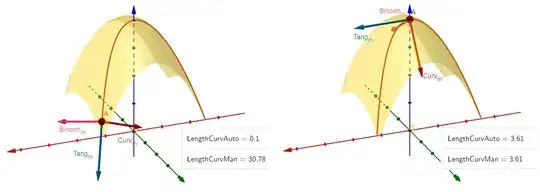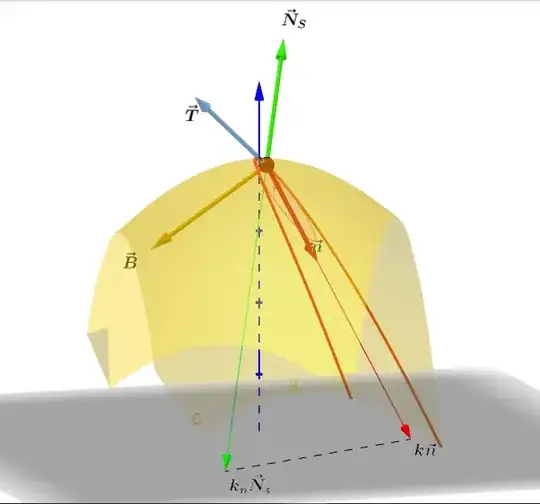I have been working on a representation of the Frenet-Serret vectors at a point of a curve on a surface embedded in $\mathbb R^3,$ utilizing built-in equations in Geogebra, and trying to reproduce the results with "manual" expressions following the cross product formulas in here.
The problem is that, although the normal vector $\text{Curv}_m$ is in the right direction, its norm seems to move in opposite direction using the built-in formula as compared to the manually typed cross product $\left(T(t)\times T'(t)\right)\times T(t).$ This is very apparent upon visual inspection: for instance, comparing the values at the point of least curvature to the point with maximum curvature, where the values converge:
Before normalizing these vectors (as they appear on the graphs), the length of the normal vector at a point along the relatively straight segment is close to $0$ using the built-in formulas, whereas it is $30$ using the cross-product formula. At the top, markedly curved part, the values are similar at around $4$ with both methods.
Why is the cross product moving in inverse norm value as the actual curvature? And is there any adjustment that would correct this?
Requested in comments:
Underlying surface/curve:
The surface $S$ was set up as with domain boundaries for $-1<x<1$ and $-1<y<1$ as:
$$f(x,y)=-x^2+\cos(x)+\cos(y)$$
The space curve $C\in \mathbb R^3$ was parametrized by $t$ with $-1<t<1$ as:
$$C(t)=(t,t^2,f(x,y))$$
With $x=t$ and $y=t^2.$

